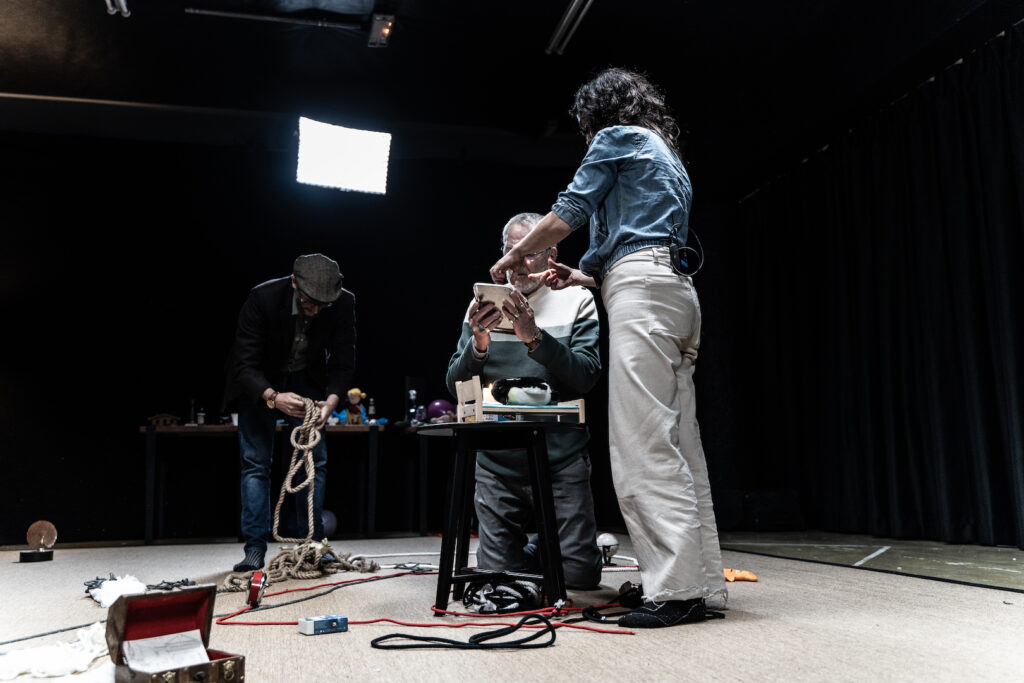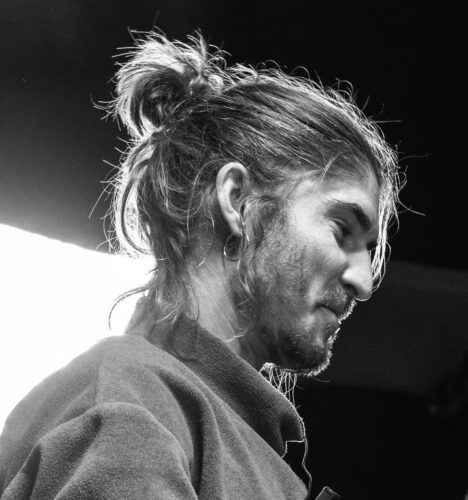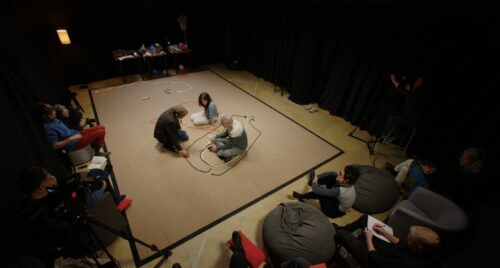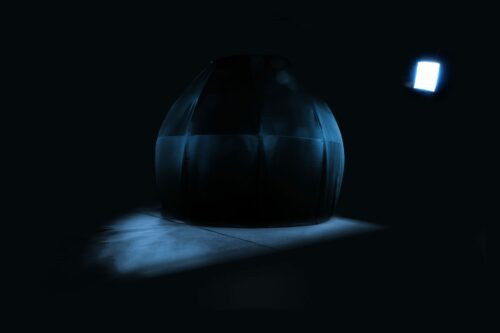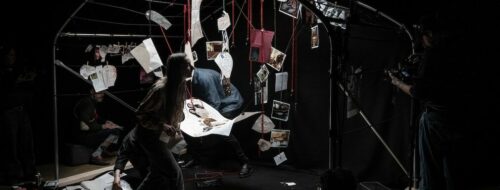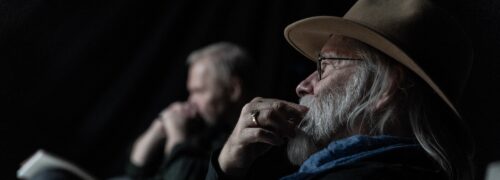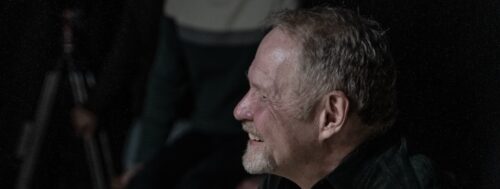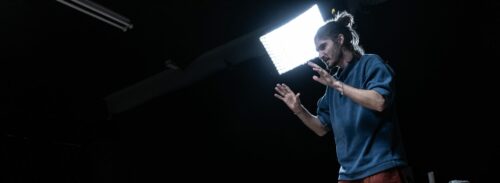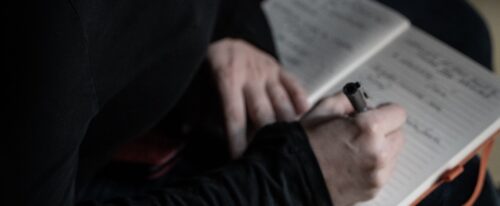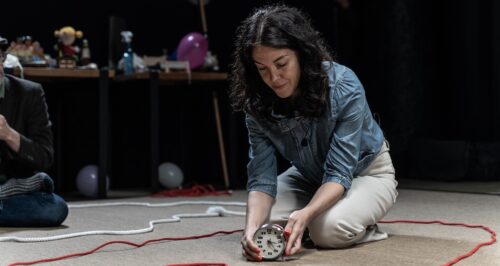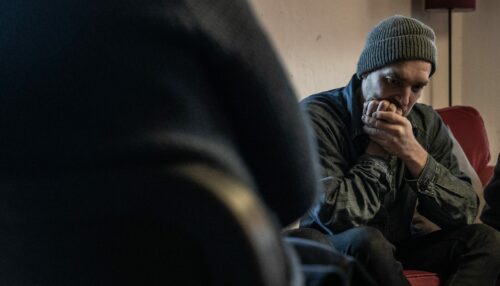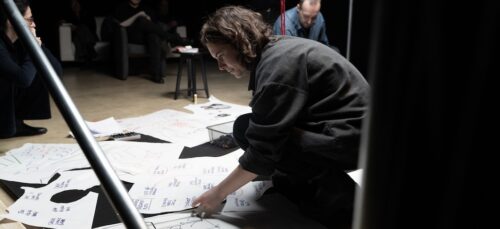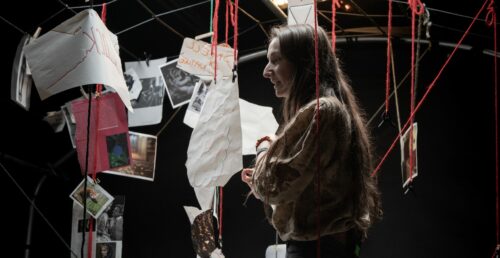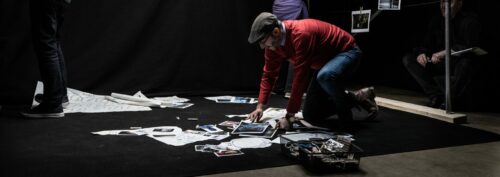Théo Gorin
Born in 1994 and living in Marseille, Théo initially conducted social science research at the (École des Hautes Études en Sciences Sociales), focusing on improvisational theater and the spontaneous creative process, under the direction of Michel de Fornel. He draws on a conversationalist methodology inspired by ethnomethodology, through a two-pronged analysis focusing on both on-stage interaction and the workshop work that precedes it. At the same time, Théo is an actor, improviser, clown, and holds a doctorate in language sciences. He is also a trainer in theatrical improvisation, a discipline he pursues through abundant hybridizations.
— As part of its 5th season, the StoryTANK team wanted to try a new experiment, under the guidance of six passionate and captivating researchers. The goal was to test and film the emergence of story ideas within experimental frameworks created by LA FABRIQUE DES MONDES — a unique initiative in Europe, developed at Le Groupe Ouest since 2023, under the auspices of the French Ministry of Culture.
The experience was offered to six screenwriters or filmmakers from six different European countries. Here, the StoryTANK provides an opportunity to explore and shed light on the creative process.
Below, a debrief by Théo Gorin, as he reflects on his experience.
LA GROTTE
COMPOSING THE NARRATIVE: WALKING THROUGH HISTORY
“All these images are in no way an end in themselves, but a means of transportation.”
In the Cave, combining image research using artificial intelligence with iconographic material that you have to create, through magazines, through clipping, etc., opens up new possibilities, allowing you to immediately enter the universe visually, while at the same time not getting stuck there. It’s a rare sensation, a unique atmosphere.
There’s really the idea of a path, a logic of progression that’s more important than the final result, with a practice close to improvisation. With the power of conversation at the heart of what we are doing, the very basis of collaboration in the composition of the story.
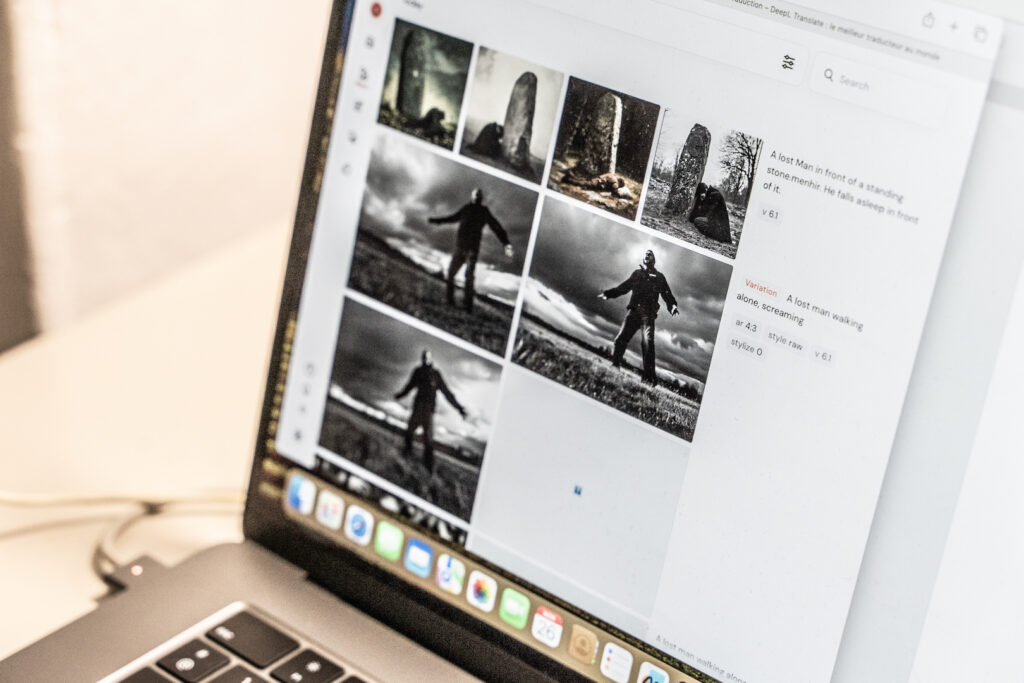
TELLING THE STORY: TAKING IT, CUTTING IT UP, PUTTING IT TOGETHER
“With the Cave, we stop thinking that the idea is only cerebral; the idea is also outside of ourselves: it’s there.”
In the Cave, there’s something playful about the act of doing that’s extremely enjoyable: taking it, cutting it up, displaying it. The whole body is then engaged. We stop thinking that the idea is only cerebral; the idea is also outside of ourselves: it’s there.
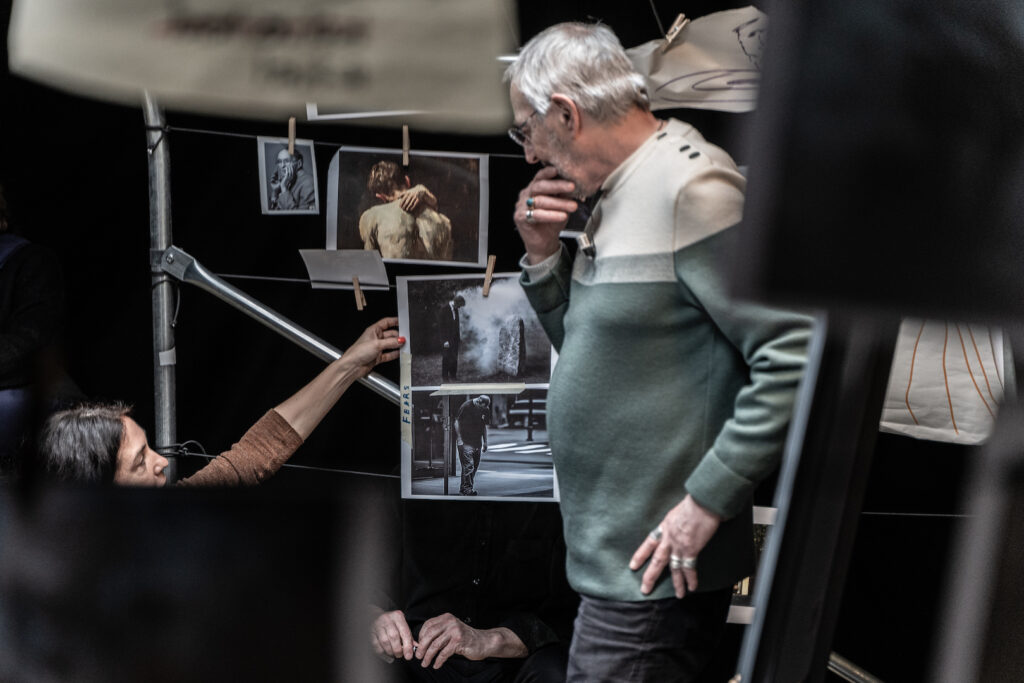
THE BLACK ROOM
FREEZING TIME TO MOVE THE STORY FORWARD
“In the Black Room, time no longer has any effect”
As they enter the Black Room, I share aloud: “ They’re like speleologists entering a place where time no longer exists, and reappearing as if it were twenty years later.” Time no longer has any eff ect because it stops, freezes.
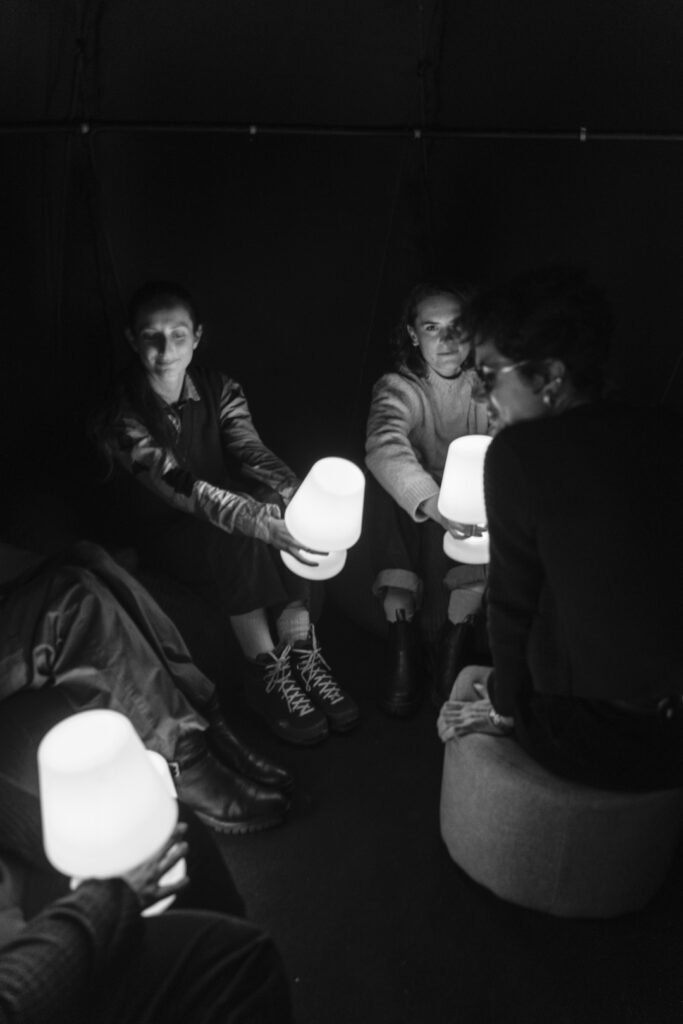
THE FACTORY OF WORLDS
GIVING TEXTURE TO THE NARRATIVE
“THE FACTORY OF WORLDS: A protocol for exploring and investigating narratives.”
THE FACTORY OF WORLDS creates an exploration protocol that borders on investigation, a true inquiry. We track the story we are building, gradually offering insights from which we can build. We move beyond the written word to enter into the spatialization of the idea, through visualization, sensation, and the surprise it provokes, to give texture to the narrative. With the Cave, we begin the composition of the narrative by ruling out possibilities, then with the Black Room, we refocus and work on feelings and interiority. And from there, the characters we saw appearing at the very beginning emerge, and we begin to enter into these characters, step by step.
